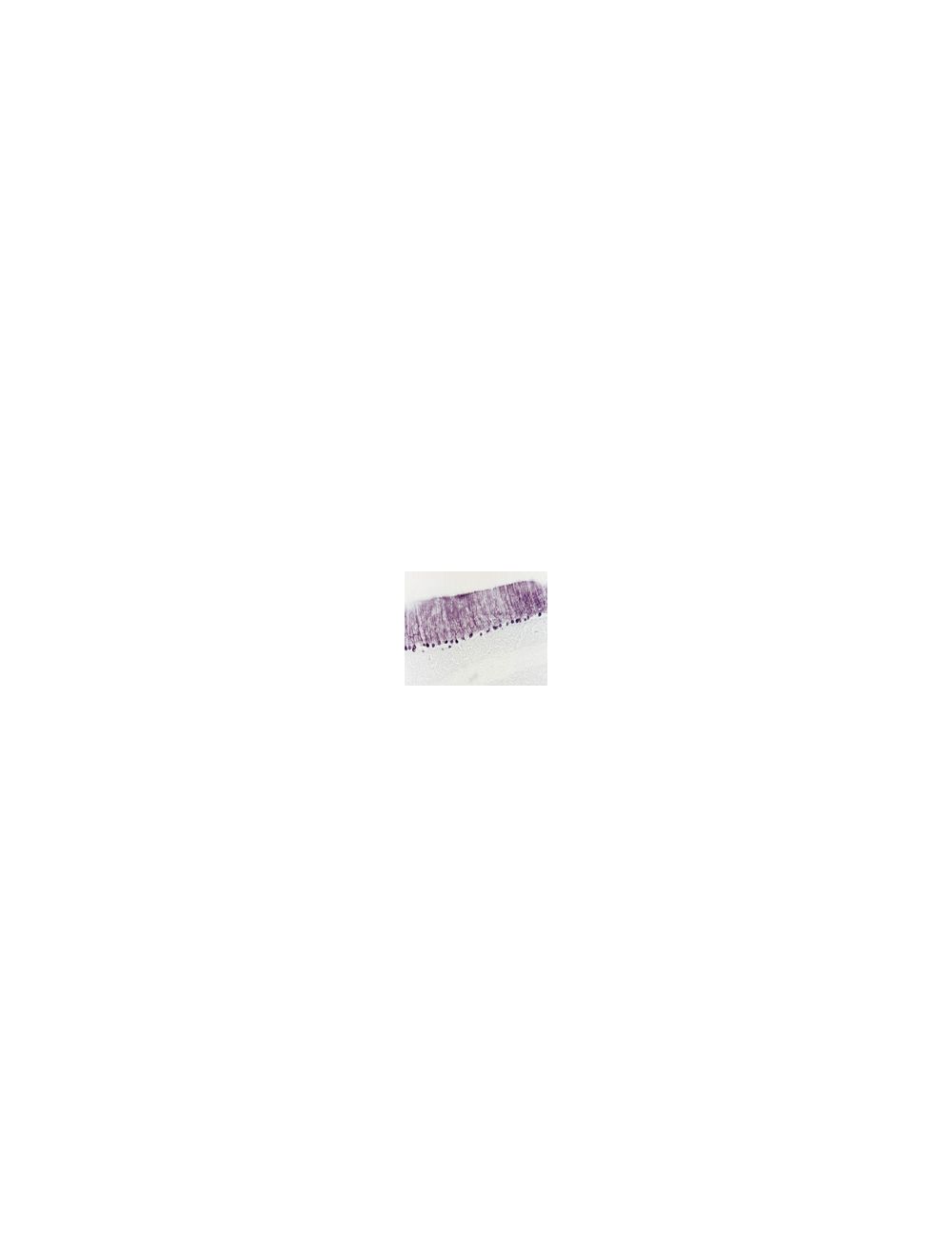Neurotrophin-3 (NT-3), Rabbit Polyclonal Antibody
As low as
US$247.00
Only %1 left
Catalog Number
R-175
- Product Name Neurotrophin-3 (NT-3), Rabbit Polyclonal Antibody
- Product Description Rabbit anti-Neurotrophin-3 (NT-3) Polyclonal Antibody (Unconjugated), suitable for WB, IHC-Frozen, ELISA, Neutralize.
- Alternative Names Neurotrophin-3; Neurotrophic factor; HDNF; Nerve growth factor 2; NGF-2; Ntf3; Ntf-3
- Application(s) ELISA, IHC-Frozen, Neutralize, WB
- Antibody Host Rabbit
- Antibody Type Polyclonal
- Specificity A cross reactivity of less than 0.1% to mouse NGF, recombinant human BDNF and NT4/5 has been shown by dot blot. This antiserum is known to react with rat, chicken and human NT3.
- Species Reactivity Chicken, Human, Rat
- Immunogen Description A synthetic peptide (YAEHKSHRGEY) as part of human (aa: 139-149), mouse and rat NT3 protein conjugated to BSA has been used as the immunogen.
- Conjugate Unconjugated
- Purity Description Affinity purified
- Regulatory Status For research use only.
Product Info
- Product Description Rabbit anti-Neurotrophin-3 (NT-3) Polyclonal Antibody (Unconjugated), suitable for WB, IHC-Frozen, ELISA, Neutralize.
- Application(s) ELISA, IHC-Frozen, Neutralize, WB
- Application Details IHC, ELISA, WB, inhibition of biological activity. A concentration of 1-10 µg/mL is recommended for IHC, ELISA, WB and inhibition of biological activity in vitro; 2-10 µg/mL (ED50) for in vivo use. Biosensis recommends optimal dilutions/concentrations should be determined by the end user.
- Target Neurotrophin-3 (NT-3)
- Specificity A cross reactivity of less than 0.1% to mouse NGF, recombinant human BDNF and NT4/5 has been shown by dot blot. This antiserum is known to react with rat, chicken and human NT3.
- Target Host Species Human
- Species Reactivity Chicken, Human, Rat
- Antibody Host Rabbit
- Antibody Type Polyclonal
- Antibody Isotype IgG
- Conjugate Unconjugated
- Immunogen Description A synthetic peptide (YAEHKSHRGEY) as part of human (aa: 139-149), mouse and rat NT3 protein conjugated to BSA has been used as the immunogen.
- Purity Description Affinity purified
- Format Lyophilized
- Reconstitution Instructions Spin vial briefly before opening. Reconstitute in 20 µL sterile-filtered, ultrapure water. Centrifuge to remove any insoluble material.
- Storage Instructions After reconstitution keep aliquots at -20°C for a higher stability, and at 2-8°C with an appropriate antibacterial agent. Glycerol (1:1) may be added for an additional stability. Avoid repetitive freeze/thaw cycles.
- Batch Number Please see item label.
- Expiration Date 12 months after date of receipt (unopened vial).
- Alternative Names Neurotrophin-3; Neurotrophic factor; HDNF; Nerve growth factor 2; NGF-2; Ntf3; Ntf-3
- Uniprot Number P20783
- Uniprot Number/Name P20783 (NTF3_HUMAN)
- Scientific Background NT3 is a member of the neurotrophin family, that controls survival and differentiation of visceral and proprioceptive sensory neurons. NT3 is closely related to both NGF and BDNF. It may be involved in the maintenance of the adult nervous system, and may affect development of neurons in the embryo when it is expressed in human placenta. NT3-deficient mice generated by gene targeting display sevvere movement defects of the limbs. The mature peptide of this protein is identical in all mammals examined including human, pig, rat and mouse. SUBCELLULAR LOCATION: Secreted protein. TISSUE SPECIFICITY: Brain and peripheral tissues. SIMILARITY: Belongs to the NGF-beta family.
- Shipping Temperature 25°C (ambient)
- UNSPSC CODE 41116161
- Regulatory Status For research use only.
Specifications
-
General References
Zouh et al. (1996) Mol. Neurobio. 13(3): 185-97
Rush et al. (1997) Clin. Exp. Pharmacol. 24: 549-55
Tafreshi et al. (1998) Neurosci. 83(2): 373-80

 1800 605-5127
1800 605-5127 +61 (0)8 8352 7711
+61 (0)8 8352 7711

